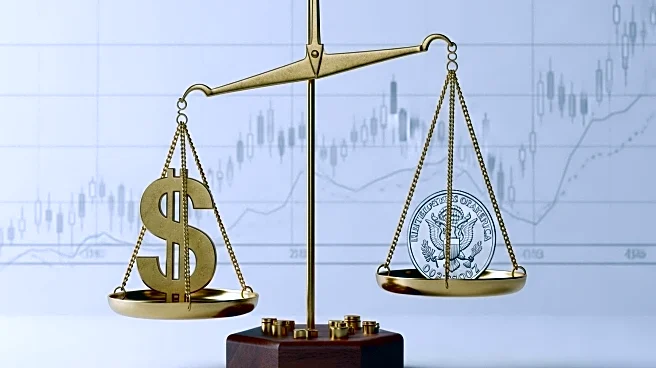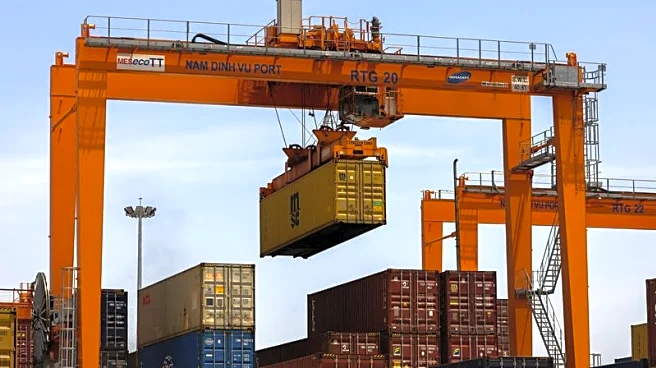What's Happening?
The OECD has reported that the full impact of U.S. tariffs is yet to be felt, despite current growth holding up due to AI investments and fiscal support. The organization forecasts U.S. economic growth to slow to 1.8% in 2025, with tariffs expected to weigh on investment and trade growth. The effective U.S. tariff rate has reached 19.5%, the highest since 1933, affecting production costs and consumer prices. The OECD notes that firms have absorbed much of the shock through inventory buffers and narrower margins.
Why It's Important?
The OECD's report underscores the potential long-term economic challenges posed by U.S. tariffs, which could lead to reduced investment and trade activity. The tariffs have increased costs for businesses, potentially impacting employment and consumer prices. The report suggests that while current growth is supported by AI investments and fiscal measures, the full economic impact of tariffs may lead to slower growth and increased economic uncertainty.
Beyond the Headlines
The report highlights the broader implications of U.S. trade policies, including potential shifts in global trade dynamics and economic relations. The tariffs have introduced volatility in trade patterns, raising concerns about long-term economic stability and the role of the U.S. in the global economy. As businesses adjust to higher costs, there may be increased pressure on policymakers to address trade barriers and support economic growth.











